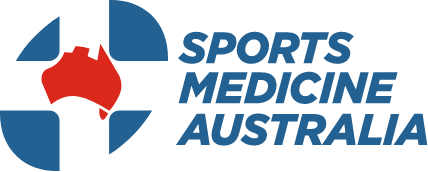On 14 July 2023, the Consensus Statement on concussion in sport was released after the 6th International Conference on Concussion in Sport was held in Amsterdam in late October 2022. The 6th International Conference was the culmination of a 5-year process. This process took 2 years longer than initially planned due to pandemic influenced postponements and was aimed to be more extensive than previous editions. Over the 4-day conference in 2022, 31 experts from representative countries including Australia, Canada, Finland, Japan, South Africa, USA, UK, Switzerland, and the Czech Republic took part in expert panel meetings and workshops to review and develop new clinical assessment tools related to concussion based off the current available research.
The Consensus Statement is developed for healthcare professionals involved in the care of athletes at risk of sport-related concussion (SRC) or who have sustained a suspected SRC at any level of sport. The authors of the statement recognise that the science of concussion continues to evolve, and the newest statement has been produced based on the evidence-based clinical information that is available at the time of the Conference.
This Conference included new features, including a focus on the para-athlete, the athlete’s perspective, concussion-specific medical ethics, and items related to both athlete retirement and long-term effects of SRC, including neurogenerative disease.
In addition to the development of the Consensus Statement, the Conference brought about revised tools such as the Concussion Recognition Tool-6 (CRT6), and Sport Concussion Assessment Tool-6 (SCAT6, Child SCAT6). A new tool was also introduced named the Sport Concussion Office Assessment Tool-6 (SCOAT6, Child SCOAT6).
Other key additions and changes included (but are not limited to):
- Two additions to the 11 R’s that provide logical flow of clinical concussion management. RETIRE; to address issues related to possible career-ending decisions and REFINE; to highlight the need to embrace ongoing strategies to advance the field.
- An updated definition of sport-related concussion (SRC).
- Concussion prevention recommendations through policy or rule changes, personal protective equipment (PPE), training strategies and use of concussion management strategies.
- Updates to the Sport Concussion Assessment Tool (SCAT6) tool for medical professionals.
- Development of a Sport Concussion Office Assessment to give healthcare professionals a standardised, expansive and age-appropriate clinical guide to a multidomain evaluation in the subacute phase (72 hours to weeks postinjury) and with a view to guide individualised management.
- A refined and redesigned Concussion Recognition Tool (CRT6)
The information presented in the Consensus Statement is aimed at medical professionals and those working in sport that might be tasked with acute recognition and management of people who sustain an SRC. It is important to understand your role and responsibility, legally and professionally, and what is in, but most crucially, what is outside of your scope of practice when interpreting the statement and reported best practice guidelines.
What does this mean for the Sport Trainer?
The new Concussion Recognition Tool 6 (CRT6) is encouraged for use in acute and suspected concussion. Most of the time, we are the first responder; we might see the incident and be the person recognising the signs and symptoms of concussion. It is crucial that as a sports trainer, you know what you are looking for and take seriously what an athlete is saying about their symptoms. We need to be on the lookout for ‘red flags.’ Red flags indicate an ambulance is required as soon as possible to tend to the athlete. When we suspect concussion but are certain there are no red flags we must refer to a medical professional for assessment and diagnosis.
You will notice on the CRT6, the red flags are listed on the front page at the top of the document. This makes it easy for the sports trainer to look for these first so that emergency assistance can be called for as soon as possible. The form is then numbered from Steps 1 to 3.
- Step 1 is observing visible cues of suspected concussion.
- Step 2 provides a list of physical symptoms, changes in emotions and changes in thinking to consider.
- Step 3 is used to guide us with questions to check the athlete’s awareness.
The CRT6 can be used for children, adolescents, and adults and it is encouraged that you use all steps outlined to ensure that effective treatment and management can be provided.
As Sports Trainers, we are not qualified to use the Sport Concussion Assessment Tool (SCAT6) forms for adults or children. These assessment tools are for use only by a medical professional or medical doctor, so the CRT6 is the best tool we have in our pocket to recognise, remove, and refer an athlete who we believe has a suspected concussion.
The focus for future research.
During the Conference, the authors of the Consensus Statement identified gaps in concussion-related research including additional topic areas.
The audience in attendance were invited to share their priorities and 342 participants responded by communicating their top five topics of importance for future research. Long-term effects and prevention ranking first and second priorities respectively. Followed by research around rehabilitation, recovery and persisting symptoms. Additional priorities can be viewed in Figure 3 on the Consensus Statement (pp 707).
We know more than we have ever known about concussion, and its impacts, but there is still more to uncover. With the above priorities in mind, we remain hopeful that future research can continue to make advances in this field in the years to come. We encourage you to seek the most relevant and reliable information as it becomes available and to stay current with your knowledge and practices.
